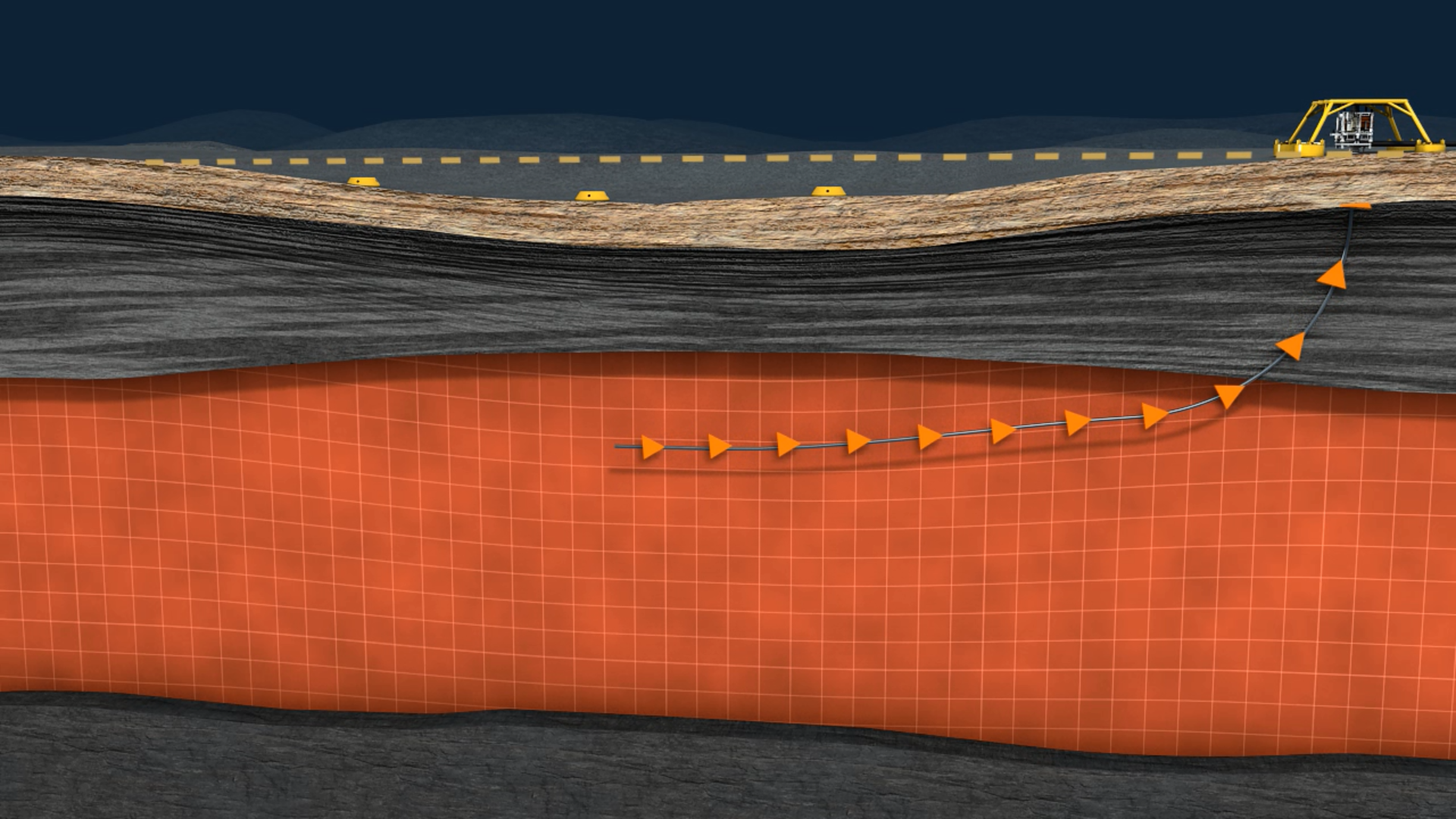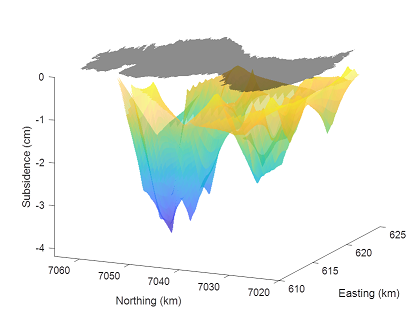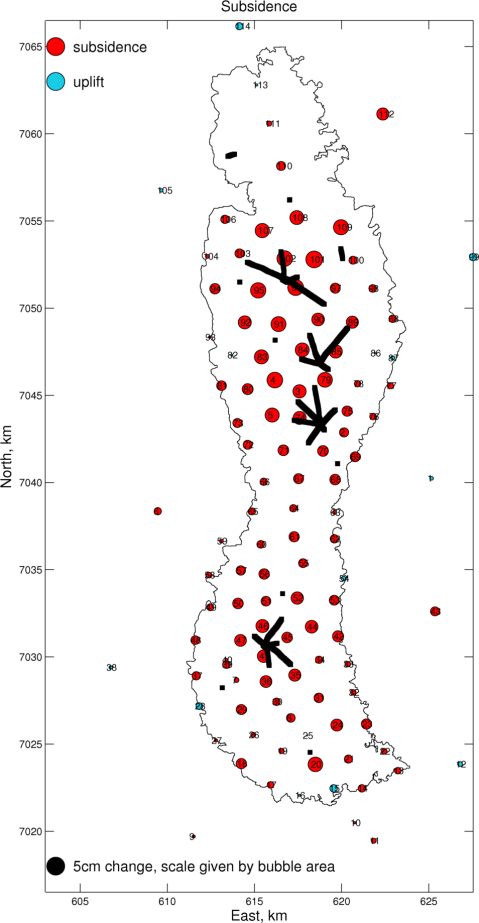Production of hydrocarbons from offshore reservoirs often leads to subsidence of the seafloor. The measurement of how this subsidence distributes laterally is a powerful geophysical tool for understanding the dynamics of the reservoir.
OCTIO DepthWatch surveying technology provides unique field-wide subsidence measurements with an accuracy of a few millimeters.
Some applications of such precise subsidence measurements are:
- Mapping pressure drop and compressibility within the reservoir
- Identifying non-depleting compartments
- Identifying the drill window for infill wells
- Calibrating the geomechanical model for improved seismic interpretation
- In extreme cases, providing person and installation safety

Pressure depletion caused by hydrocarbon production induces compaction of the reservoir, which is partially propagated to the surface and causes seafloor subsidence.
The Ormen Lange field case
Ormen Lange is the second largest gas field in Norway.
Back in 2012, installing compression facilities and drilling infill wells were considered as options to increase gass recovery at Ormen Lange. Two uncertainties needed to be addressed to decide on the optimal strategy, namely water break-through and compartmentalization.
A set of feasibility including seismic and electromagnetic methods concluded that monitoring 4D gravity and seafloor subsidence would provide the required answers in the most timely manner.
Subsidence measurements have been performed over Ormen Lange in 2007, 2009, 2012, 2014, 2016 and 2018.
The conclusions from the operator company are:
- 4D seismic does not provide the required accuracy in seafloor subsidence
- Subsidence results with a few-mm accuracy provide a clear picture for understanding reservoir compaction

3D projection of the subsidence results presented in the publication above.

Seafloor subsidence as measured at over 100 locations above the Ormen Lange field in the 2012-2014 period, from this publication.
